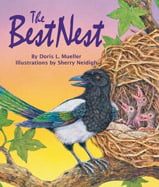Alignment to Standards for VA

| Grade | Number | Standard |
|---|---|---|
| 1 | SC-1.5b | animal characteristics:body coverings, body shape, appendages, and methods of movement) |
| 1 | SC-1.5c | animal characteristics. Key concepts include other characteristics (wild/tame, water homes/land homes). |
| 2 | SC-2.4a | plant and animal life cycles. Key concepts include some animals (frogs and butterflies) undergo distinct stages during their lives, while others generally resemble their parents; and |
| 2 | SC-2.5a | living things are part of a system. Key concepts include living organisms are interdependent with their living and nonliving surroundings; and |
| 2 | SC-2.5b | living things are part of a system. Key concepts include habitats change over time due to many influences. |
| 2 | SC-2.8c | Plants importance Key concepts include plants provide homes and food for many animals and prevent soil from washing away. |
| 3 | SC-3.10a | Key concepts include the interdependency of plants and animals; |
| 3 | SC-3.4a | animal adaptations: methods of gathering and storing food, finding shelter, defending themselves, and rearing young; |
| 3 | SC-3.4b | animal adaptations: hibernation, migration, camouflage, mimicry, instinct, and learned behavior. |
| 3 | SC-3.6b | environments Key concepts include dry-land environments (desert, grassland, rain forest, and forest environments) |
| 3 | SC-3.8b | Key concepts include animal and plant life cycles. |
| 4 | SC-4.5e | Key concepts include life cycles |
| K | CIV-K.8e | being a good citizen involves honesty, self-control, and kindness to others. |
| K | SC-K.6b | basic needs plants and animals. Key concepts include plants and animals live and die (go through a life cycle); and |
| K | SC-K.8c | simple patterns in daily life. Key concepts include animal and plant growth |